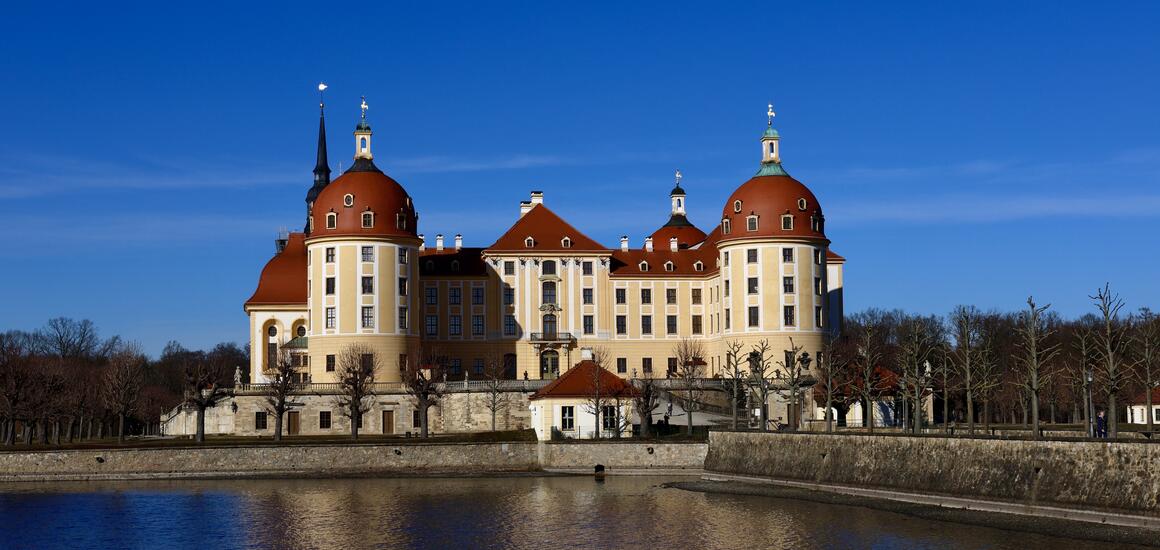
DATE: 4th March 2025
COMMENTS & HISTORY
COMMENTS
Visiting Schloß Moritzburg from Prague is very easy and the journey takes approximately 90 minutes by car. The Schloss is located at the end of Schloßallee and dominates the skyline of Moritzburg.
There is a large car park available for visitor parking for the Schloẞ and is only a few minutes walk to the Schloß itself. The Schloss is set in a beautiful wooded scape and walks in the woods and around the Schloss are highly recommended. During my visit, I did not enter the Schloss but I understand that a visit to view the interior is highly recommended.
The Schloss was originally built as a "hunting lodge" and I can honestly say that this is probably the most imposing "hunting lodge" that I have ever seen, even though it was "transformed" in the early 18th Century.
HISTORY
Schloss Moritzburg is a baroque palace located near Dresden in Saxony, Germany. It has a rich history that spans several centuries, evolving from a hunting lodge into an opulent royal retreat. Here is a concise summary of its history:
- Foundation and Early History (1542–1670s):
Schloss Moritzburg was originally built in 1542 by Duke Moritz of Saxony as a Renaissance-style hunting lodge. Its location in a game-rich forest made it ideal for Saxon nobility’s favorite pastime—hunting;
- Baroque Transformation (1723–1733):
Elector Augustus the Strong, who was also the King of Poland, transformed the hunting lodge into a magnificent baroque palace. Under the guidance of architect Matthäus Daniel Pöppelmann, the building was expanded and redesigned to reflect Augustus’s taste for luxury and grandeur. The palace became a hunting and pleasure retreat, complete with lavish interiors and surrounding landscapes;
- Rococo and Further Enhancements (18th Century):
Augustus’s successors continued to enhance the palace. The interiors were decorated with intricate baroque and rococo designs, including fine tapestries, furniture, and an impressive collection of hunting trophies. The surrounding area was also developed into formal gardens, reflecting the French style of the era;
- 19th–20th Century:
By the 19th century, the palace served less as a royal residence and more as a cultural and historical site. During this time, efforts were made to preserve its architectural and artistic heritage. The Wettin family maintained it as part of their legacy.
- Modern Era:
After World War II, the palace became public property and was turned into a museum. Today, it houses exhibitions showcasing its history, baroque artistry, and Saxon hunting culture. It is also renowned for its role as the filming location for the classic East German fairy tale film Three Wishes for Cinderella (1973).
Schloss Moritzburg remains a popular tourist destination, celebrated for its picturesque location, set amidst a lake, and its well-preserved baroque splendor.









































Add new comment